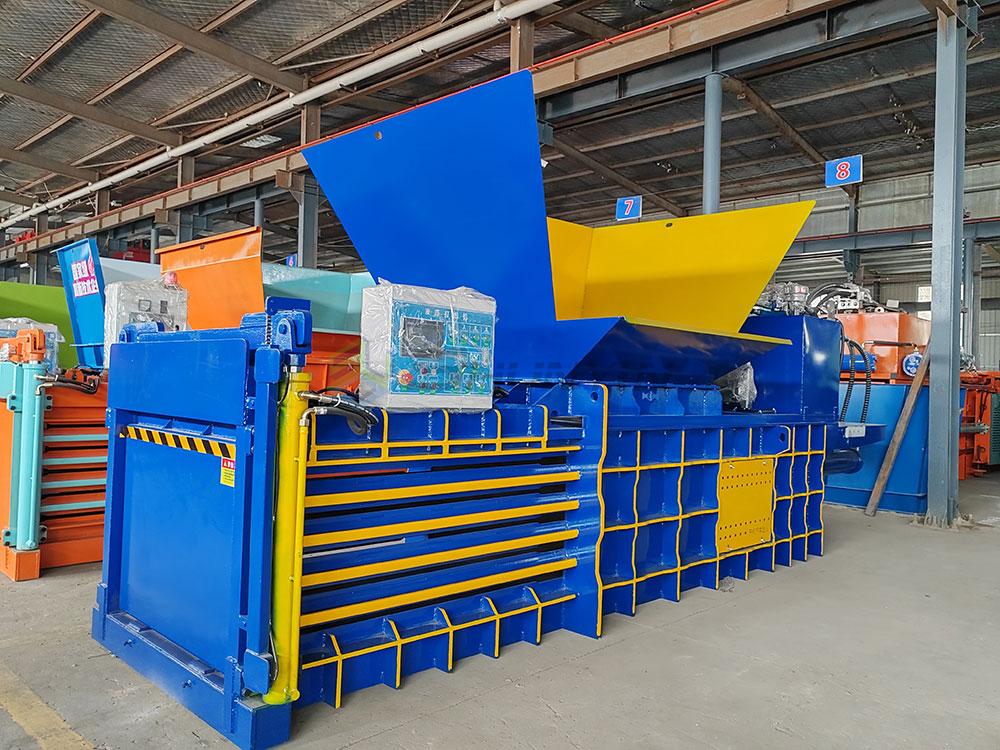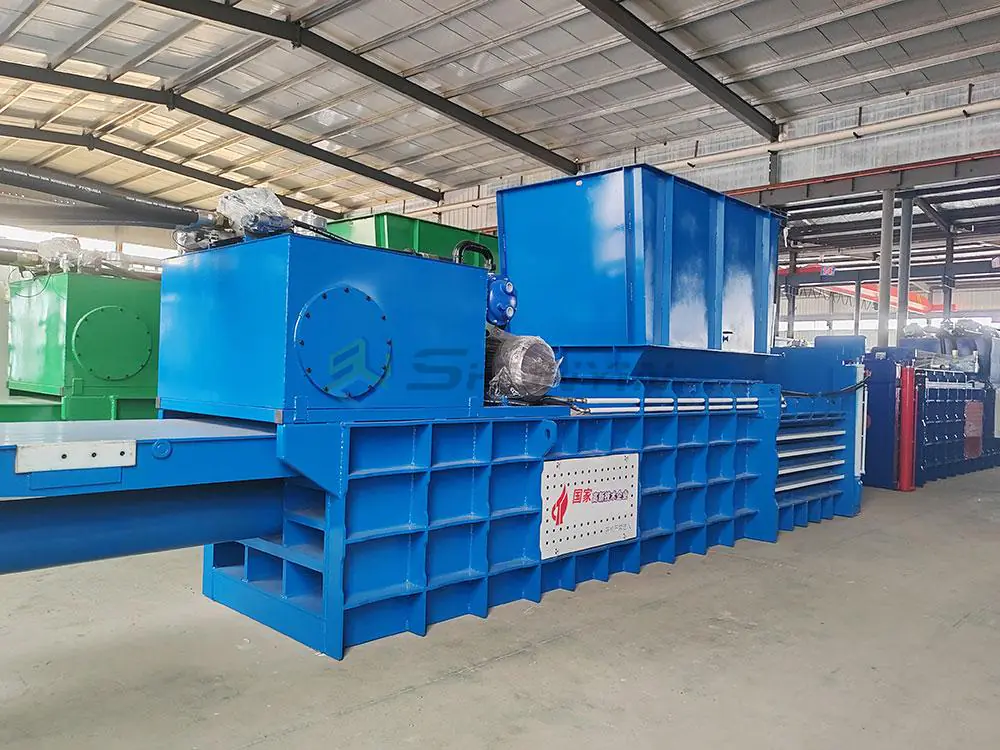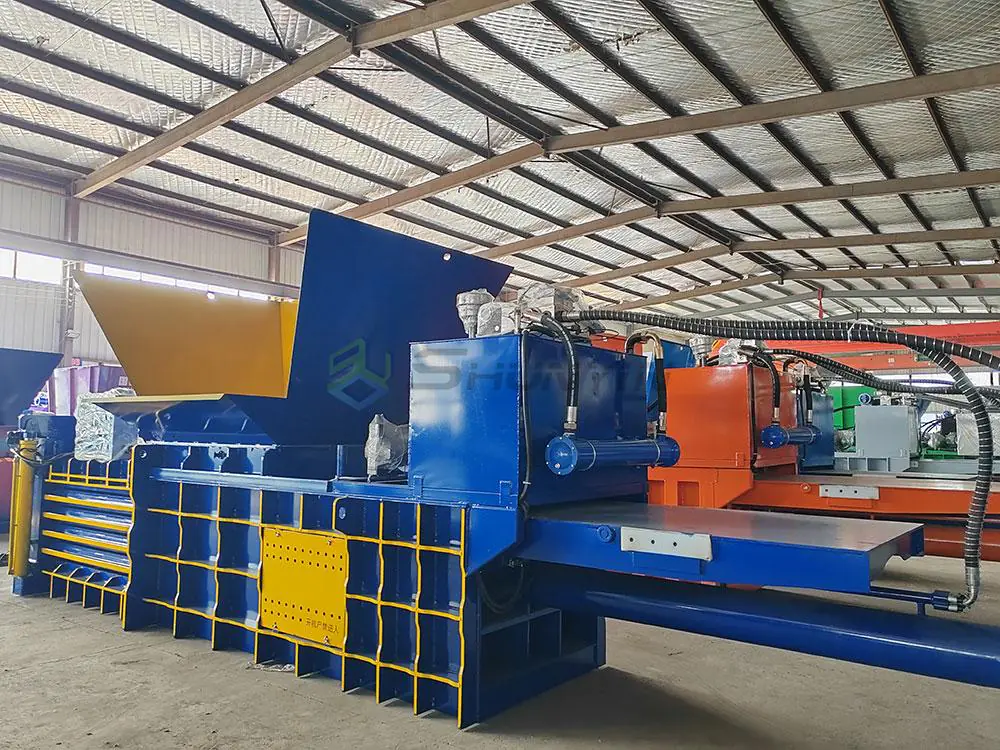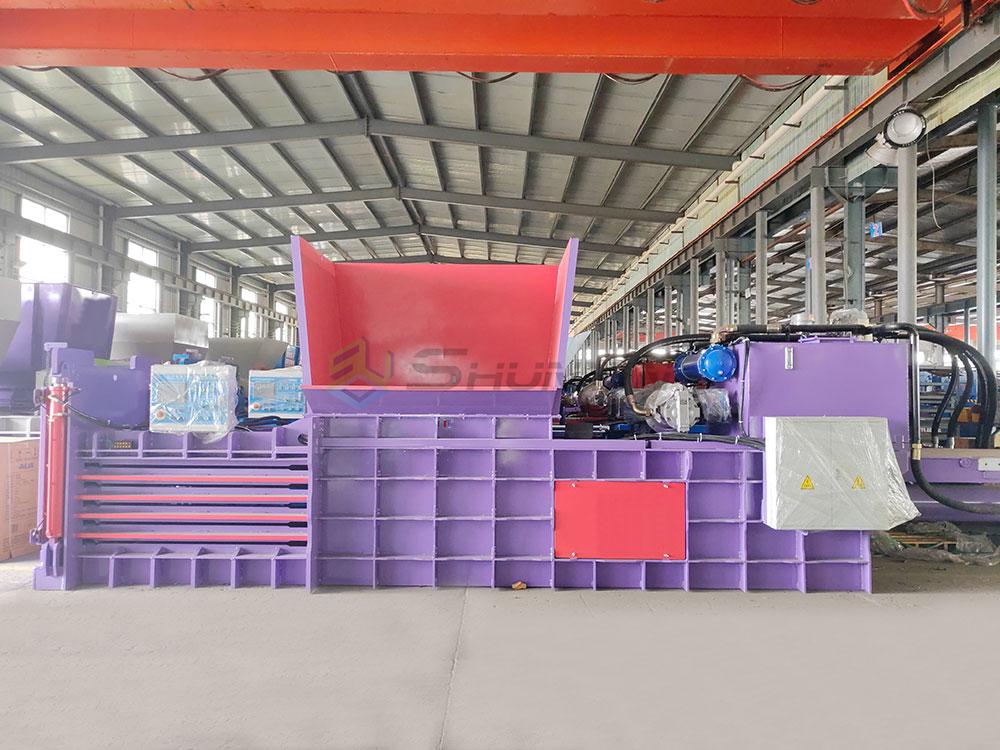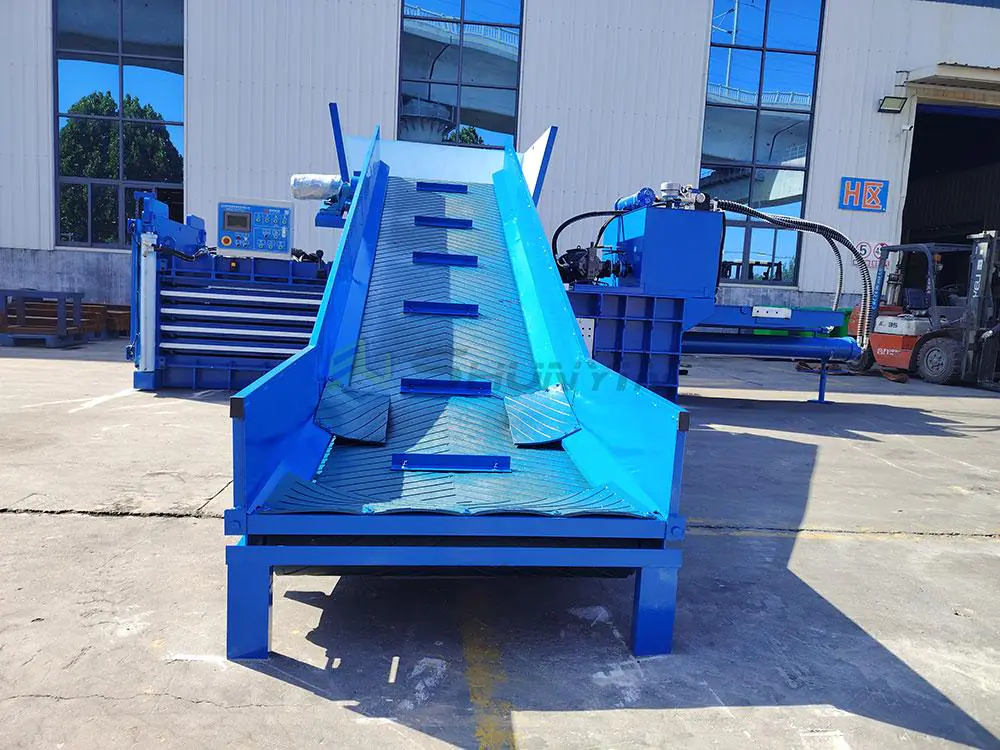Plastic and paper waste overwhelms recycling facilities daily. Volume reduction becomes impossible without proper equipment. Modern hydraulic balers solve this space crisis efficiently.
Horizontal hydraulic balers perform best for mixed recycling. These heavy-duty machines compress plastic bottles, film, and mixed paper waste into dense, stackable bales. Our high-pressure systems maximize material density while minimizing storage footprint.

Recycling plastic and paper effectively requires the ideal equipment solution. Discover how hydraulic baling transforms waste handling operations. Let’s explore key questions about recycling machinery together.
What Machine Is Used to Recycle Plastic?
Plastic recycling plants struggle with mountains of PET bottles and film waste. Chaotic storage leads to contamination risks. A specialized baler tackles this volume crisis instantly.
Industrial hydraulic balers compress plastic scraps into dense bales. These machines feature reinforced chambers and double-cylinder compression systems. Our models handle PET, HDPE, LDPE, and plastic film at 40-150 tons of force.

Key Decisions When Choosing Plastic Recycling Equipment
Selecting equipment requires understanding plastic types and volume demands. Material characteristics directly impact machine selection. Plastics like PET behave differently than film during compression.
Density Comparison by Plastic Type
| Material Type | Pre-Compression Density | Post-Baling Density | Volume Reduction |
|---|---|---|---|
| PET Bottles | 25-35 kg/m³ | 450-550 kg/m³ | 92-94% |
| Plastic Film | 15-25 kg/m³ | 350-450 kg/m³ | 85-90% |
| HDPE Containers | 40-50 kg/m³ | 600-700 kg/m³ | 93-96% |
Pressure consistency matters significantly. Our hydraulic systems maintain compression stability across all plastic grades. Operators worldwide report bale integrity improves shipping efficiency dramatically. Consider your daily processing volume. Facilities under 5 tons daily benefit from vertical balers, while larger operations need horizontal powerhouses. Material composition affects chamber design too. Shredded plastic requires different gate systems than whole bottles. We customize feed openings and pressure cycles accordingly.
Regular maintenance prevents breakdowns during critical operations. Simple hydraulic checks weekly extend machine lifespan years. Ask us about our maintenance kits1 when ordering your equipment. Need specific guidance for your plastic mix? WhatsApp our engineering team: 0086 13505379893.
What Exactly Is a Baler in Recycling Operations?
Recycling facilities battle mountains of loose materials every day. Unprocessed scraps devour storage areas rapidly. Baling technology creates order from chaos instantly.
A recycling baler compresses loose materials into dense blocks using hydraulic power. These compact units standardize waste into stackable, transport-ready bales that maximize space utilization and minimize hauling costs.
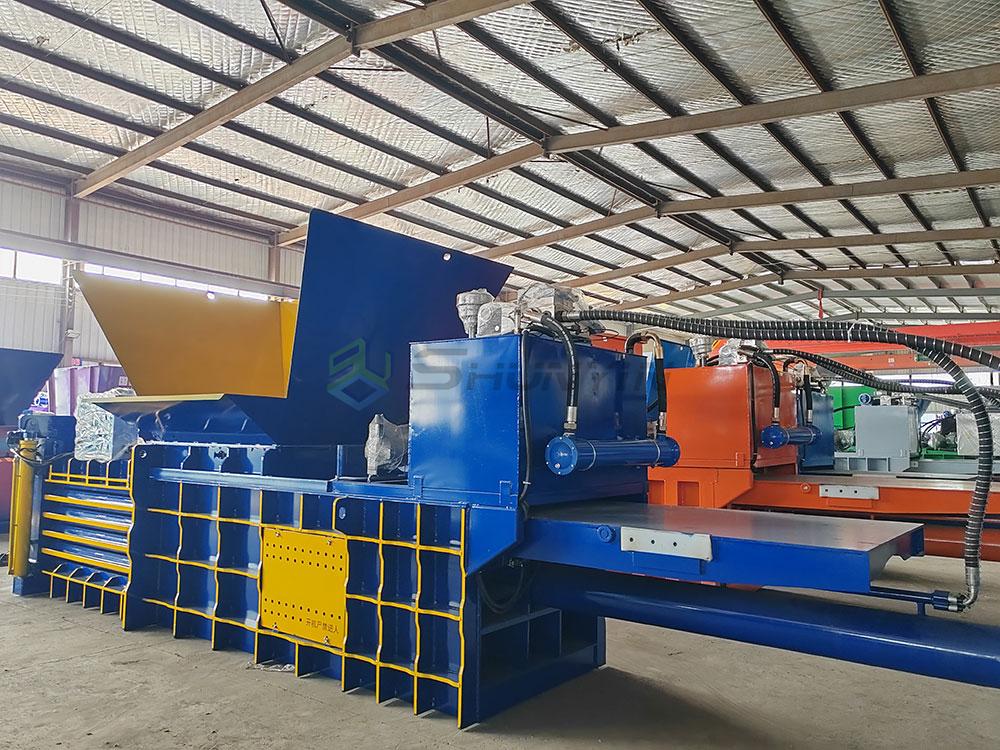
Critical Components of Modern Recycling Balers
Understanding baler anatomy ensures proper operation. Hydraulic systems power the entire process smoothly. Pressure delivery determines bale density.
Force Comparison Across Baler Classes
| Baler Type | Pressure Range (Tons) | Cycle Time | Ideal Material |
|---|---|---|---|
| Semi-Automatic | 15-30 | 60-90 seconds | Cardboard/Paper |
| Standard Vertical | 30-60 | 45-60 seconds | Plastic Bottles |
| Industrial Horizontal | 60-150 | 30-45 seconds | Mixed Plastic/Textile |
Operator safety must remain paramount. Our machines feature dual-hand controls and emergency stops. Bale ejection mechanisms prevent physical strain. Material feed systems require constant attention. Automatic conveyors reduce manual loading dangers. We integrate customized feeding tunnels when volume warrants it. Production speed directly impacts output. Measure your hourly input requirements carefully. Slower cycle times work for small shops, while continuous operations need faster equipment. Consider our high-speed series for demanding facilities.
Regular oil analysis prevents costly hydraulic failures. Our technicians recommend fluid changes every 1,000 cycles. Request our maintenance schedule via [email protected]. See our baler safety features firsthand at ShunYin Machinery
Can You Process Paper Effectively in Your Baler?
Offices drown under paper avalanches constantly. Fluffy documents consume disproportionate space. Proper baling condenses this volume dramatically.
Yes, balers process all paper types excellently. Office documents, newspapers, and cardboard compress tightly into manageable bales. Hydraulic pressure bonds cellulose fibers without special treatments.

Optimizing Paper Baling Efficiency
Material preparation dictates output quality. Contamination control preserves paper value. Moisture affects compression significantly.
Performance Metrics for Paper Baling
| Paper Grade | Ideal Bailing Pressure | Bale Weight | Density Increase |
|---|---|---|---|
| Corrugated Cardboard | 50-75 tons | 450-650kg | 12:1 ratio |
| Office Paper | 35-50 tons | 300-400kg | 10:1 ratio |
| Newspaper | 40-60 tons | 350-500kg | 11:1 ratio |
Feed consistency prevents jams. Even distribution creates symmetrical bales. Our vibration systems settle materials before compaction. Compression timing varies by material. Cardboard requires longer pressure than thin office stock. We pre-set program options for different grades. Bale binding matters most after processing. Proper wire tension prevents unraveling during transit. Testing protocols ensure secure bundling. Always inspect wire quality before loading.
Regular maintenance extends operational life. Cleaning chambers weekly prevents residue buildup. Our Japanese clients report twenty percent productivity gains from proper upkeep. Need paper-specific settings? Email [email protected] for detailed configuration sheets.
What Features Define a Plastic Baling Machine?
Plastic recyclers face unique material challenges daily. Volume-versus-weight discrepancies cause inefficiency. Dedicated baling systems overcome these physics issues directly.
Plastic baling machines deliver extreme compression through reinforced cylinders. These specialized units feature powerful compaction, wear-resistant chambers, and automated tie systems2 that create freight-ready bales under 2 minutes.

Essential Specifications for Plastic Processing
Material behavior dictates equipment requirements. Film behaves differently from rigid containers. Compression strategies must adapt accordingly.
Feature Comparison: Plastic vs General Balers
| Component | Plastic Balers | Standard Balers |
|---|---|---|
| Chamber Walls | 25mm Hardened Steel | 15mm Mild Steel |
| Compression Force | 60-150 Tons | 20-50 Tons |
| Cycle Time | <45 Seconds | 60-120 Seconds |
| Automation Level | Full PLC Control | Manual Operation |
Pressure customization solves material variations. We program separate settings for PET flakes versus PVC fragments. Automated lube systems maintain performance consistency. Cycle optimization directly impacts output. Faster baling without power wastage remains essential. Our Canadian partners report doubling throughput with variable-speed hydraulics. Temperature regulation prevents problems. Plastic friction generates immense heat. Integrated cooling protects critical seals effectively. Always monitor hydraulic temperature gauges daily.
Material-specific upgrades enhance performance. Film processors require shredding pre-treatment options. Explore our integrated solutions at https://lemonchiffon-shark-638535.hostingersite.com/. Ask about throughput guarantees: WhatsApp 0086 13505379893.
Conclusion
Modern horizontal hydraulic balers maximize plastic and paper recycling efficiency through extreme compression and reliability engineering.


